

STYLES AND TYPES OF INDIAN MUSIC. There are two main schools of Indian classical music: the Hindustani style of the North and the Karnatak (also spelled Karnatak and Karanatic) of the South.
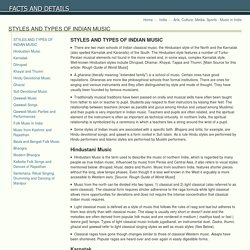
The Hindustani style features a number of Turko-Persian musical elements not found in the more varied and, in some ways, complex Karnatak style. Well-known Hindustani styles include Dhrupad, Dhamar, Khayal, Tappa and Thumri. Chinese Sports and Leisure Activities. Dragon Kings of Mythistory - Shen Yun Performing Arts. Chinese Dragons — Symbolism, Types, Culture, Legends, Art. A Chinese dragon head on a dragon boat Chinese dragons are powerful and benevolent symbols in Chinese culture, with supposed control over watery phenomenon, e.g. summoning rain during a drought.

Dragons are everywhere in China — in legends, festivals, astrology, art, names, and idioms. Dragons are seen as lucky and good — quite different to the evil, dangerous, fire-breathing dragons of most Western stories. Top 10 Chinese myths. I often wonder how the East and the West came to view mythological creatures so differently.

Are dragons lucky or scary? Are rabbits wise or timid? Cambodia Demographics Profile 2018. CAMBODIAN SOCIETY. Before the Khmer Rouge era Cambodian society was organized somewhat along hierarchal lines, although some mobility was possible, with status levels being determined by wealth and prestige.
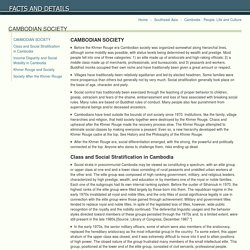
Most people fell into one of three categories: 1) an elite made up of aristocrats and high-raking officials; 2) a middle class made up of merchants, professionals, and bureaucrats; and 3) peasants and workers. Buddhist monks occupied their own niche and have traditionally been given a great amount or respect. Villages have traditionally been relatively egalitarian and led by elected headmen. Some families were more prosperous than others but generally not by very much.
Social stratification generally took place on the basis of age, character and piety. Worldpopulationreview. The Rise of Buddhism in Politics and War. Introduction to Southeast Asia. By Barbara Watson Andaya Southeast Asia consists of eleven countries that reach from eastern India to China, and is generally divided into “mainland” and “island” zones.
The mainland (Burma, Thailand, Laos, Cambodia, and Vietnam) is actually an extension of the Asian continent. African Mythology - myths and beliefs from Africa. Earth Many African peoples regard the earth as a female deity, a mother-goddess who rules all people and is the mother of all creatures.

The earth lives and gives birth to ever new generations of beings. Dragon Kings of Mythistory - Shen Yun Performing Arts. Buddhists. There are about 488 million Buddhists worldwide, representing 7% of the world’s total population as of 2010.
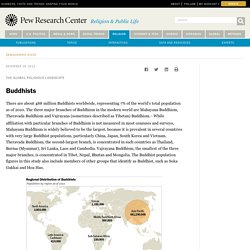
The three major branches of Buddhism in the modern world are Mahayana Buddhism, Theravada Buddhism and Vajrayana (sometimes described as Tibetan) Buddhism.12 While affiliation with particular branches of Buddhism is not measured in most censuses and surveys, Mahayana Buddhism is widely believed to be the largest, because it is prevalent in several countries with very large Buddhist populations, particularly China, Japan, South Korea and Vietnam. Theravada Buddhism, the second-largest branch, is concentrated in such countries as Thailand, Burma (Myanmar), Sri Lanka, Laos and Cambodia.
Vajrayana Buddhism, the smallest of the three major branches, is concentrated in Tibet, Nepal, Bhutan and Mongolia. The Buddhist population figures in this study also include members of other groups that identify as Buddhist, such as Soka Gakkai and Hoa Hao. Median Age. Buddhism and Democracy. Pāli language. Southeast Asia. Thousands of ABORIGINAL NAMES OF GODS & GODDESSES for your DOG, CAT, HORSE, PET AND CHILD! From Chinaroad Lowchens of Australia. Introduction. Alternative Mythology: The Bantu. The Fantasy Genre has long been dominated by the religions and customs of countries touched on by the Crusades.
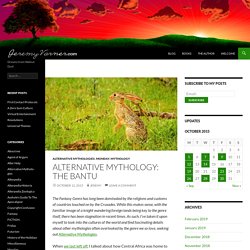
While this makes sense, with the familiar image of a knight wandering foreign lands being key to the genre itself, there has been stagnation in recent times. As such, I’ve taken it upon myself to look into the cultures of the world and find fascinating details about other mythologies often overlooked by the genre we so love, seeking out Alternative Mythologies. Religious Literacy Project. The Bantu are a non-Somali ethnic minority that has historically been marginalized within Somalia.
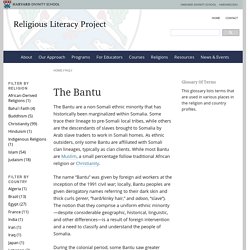
Some trace their lineage to pre-Somali local tribes, while others are the descendants of slaves brought to Somalia by Arab slave traders to work in Somali homes. As ethnic outsiders, only some Bantu are affiliated with Somali clan lineages, typically as clan clients. African Civilizations. Land of Geographic Contrasts Deserts Rainforests Savannas Coastal areas/ Mediterranean climate.
Bantu climate: Average Temperature, weather by month, Bantu weather averages - Climate-Data.org.